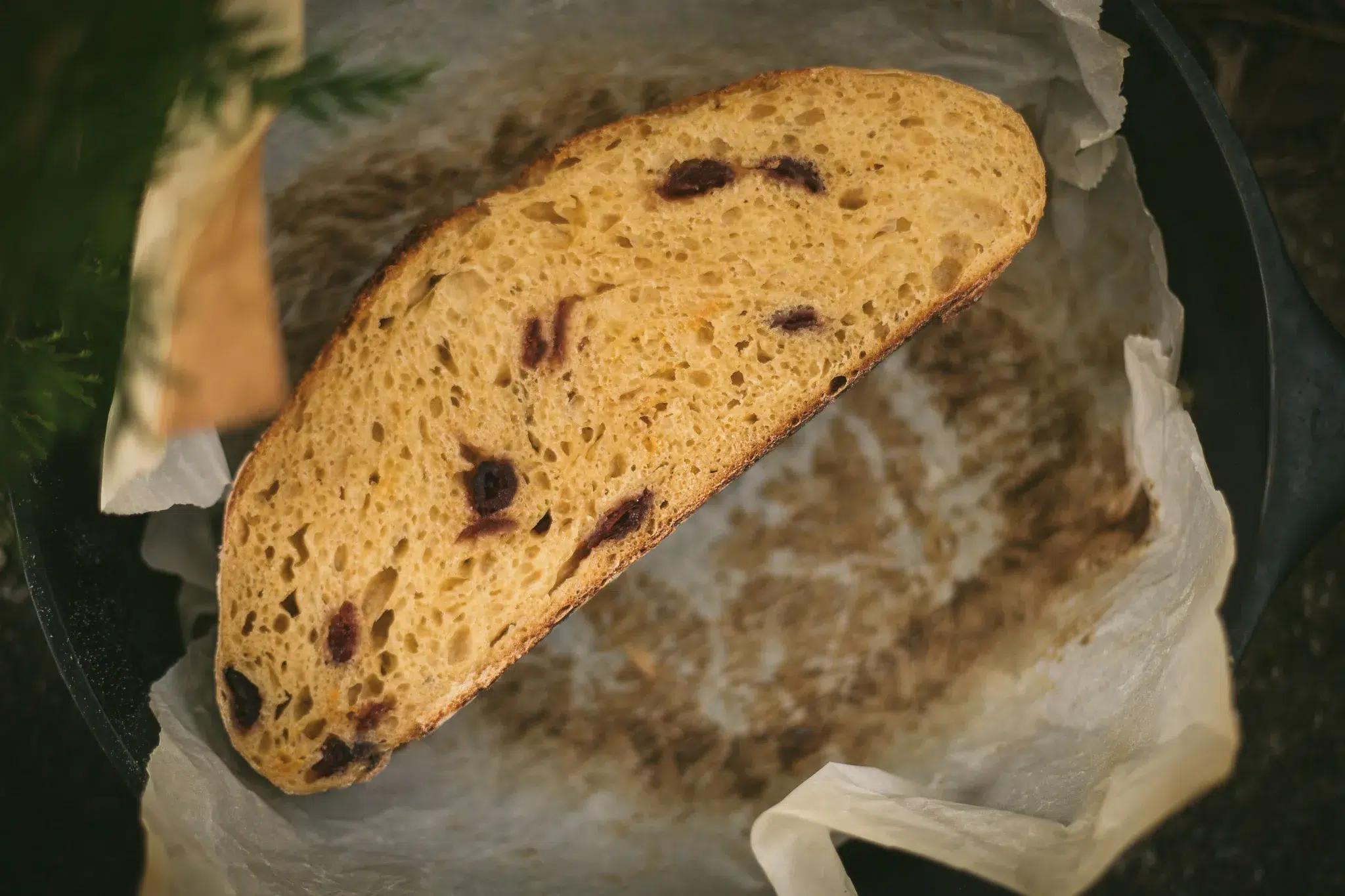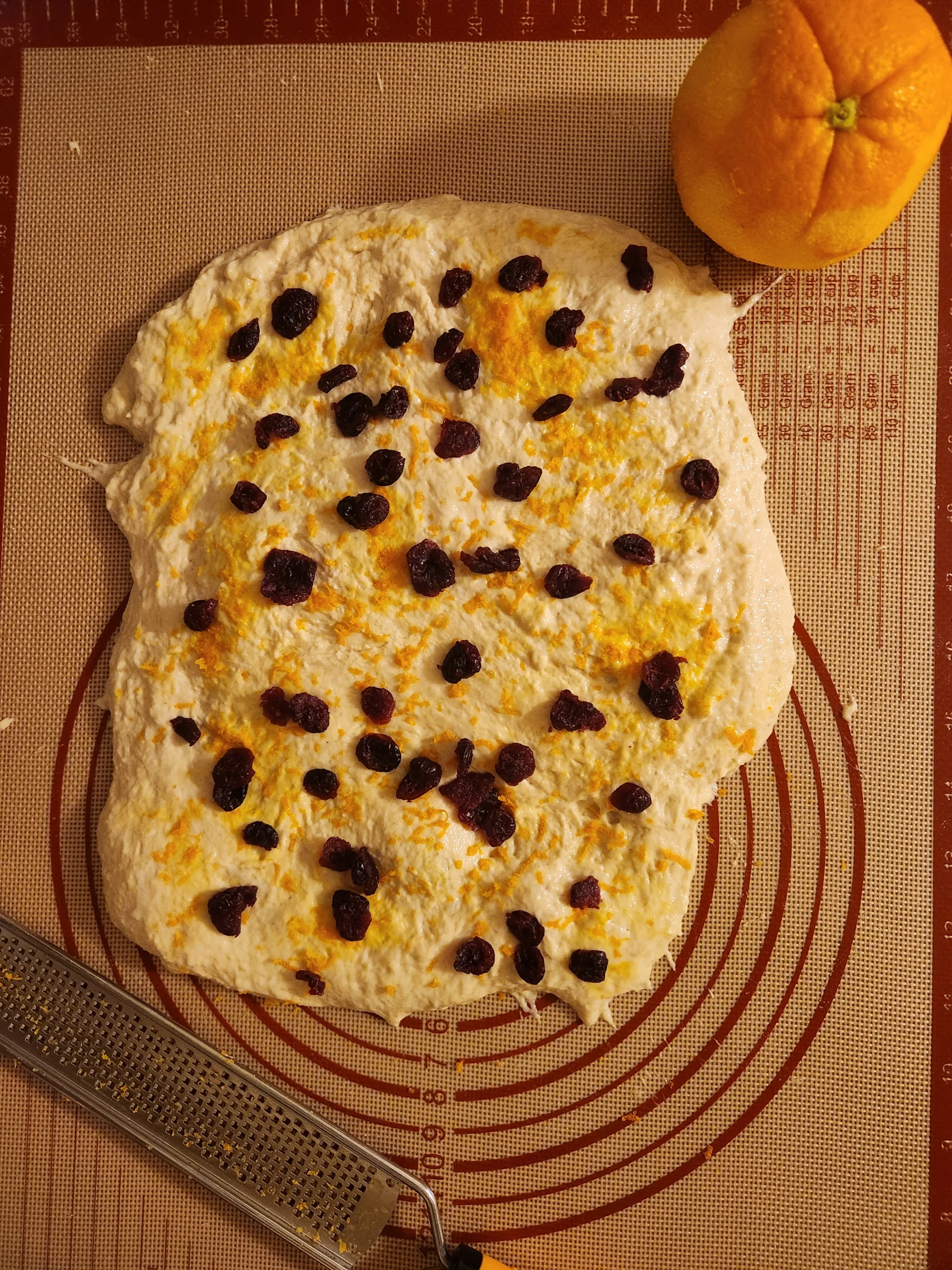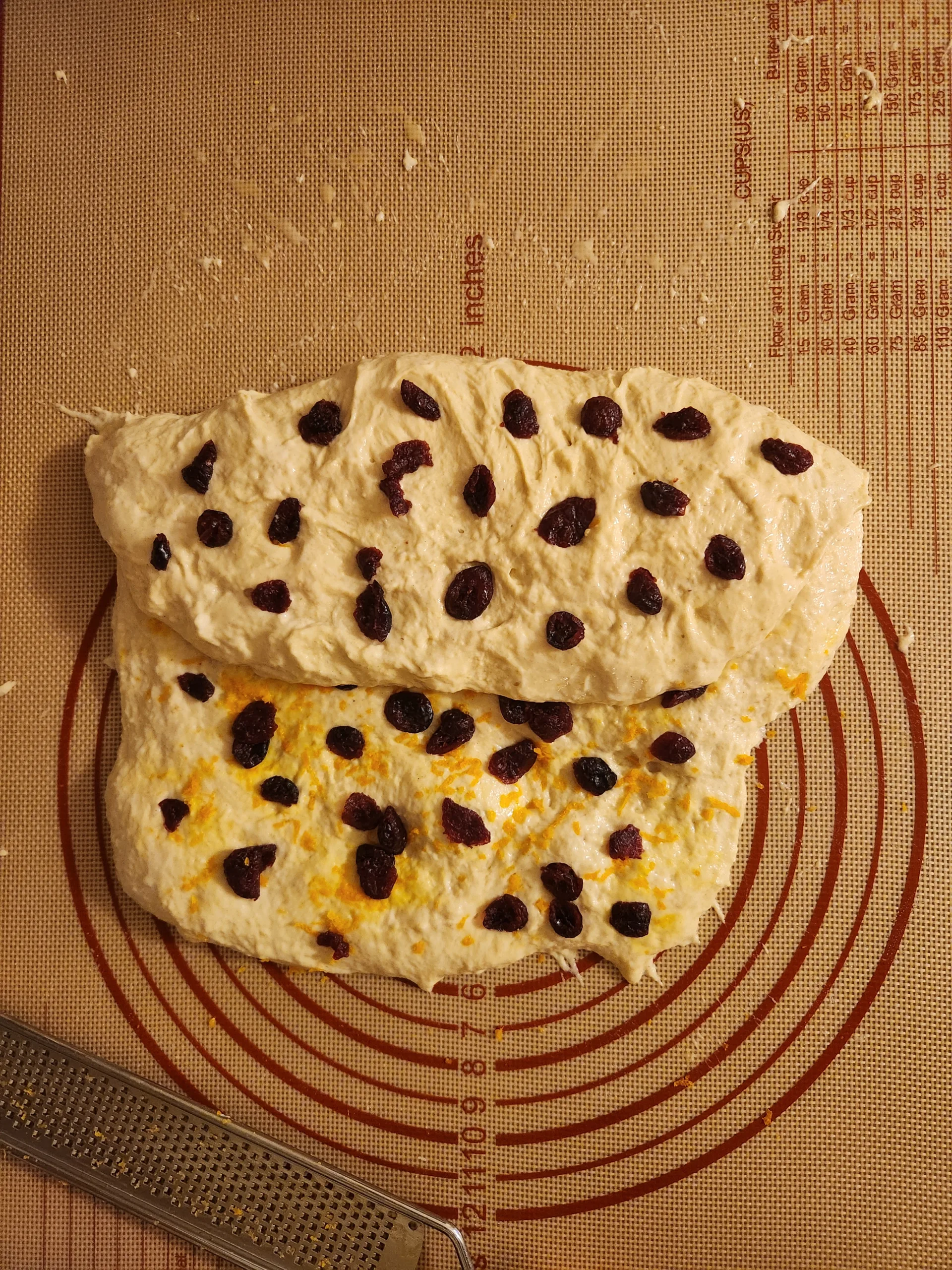
Sourdough Inclusions are becoming quite popular as more and more people discover fermented bread! I love adding new flavors and ingredients to my sourdough but it does take a little bit of knowledge before you start tossing things into your dough. Inclusions are additional ingredients used to change the flavor profile of your standard artisan bread. Instead of baking a regular loaf, you can add in nuts, seeds, dried fruit, citrus zest, and even chocolate! Now let’s talk about some of my favorite inclusions and a few tips to incorporate them.
How to add flavors to sourdough?
It’s as easy as starting with a simple recipe, I recommend my rustic artisan sourdough loaf. Add the additional ingredients either during the stretch and folds, or by laminating them into the dough before cold fermentation. Check out my notes below on lamination for more information on this!
My Favorite Sourdough Inclusions
Cranberry orange
This is the sourdough inclusion I shot for this blog. I substituted the water in the recipe for orange juice and added orange zest and dried cranberries.
Cranberry walnut
A favorite for autumn, I wrote a blog on this inclusion a few years back.
Rosemary and roasted garlic
This was one of my very first sourdough recipes on the blog, and so delicious I still make it all the time.
Cheddar and pickled jalapeno
This one is a crowd pleaser and you can decide how spicy to make it.
Olive
Add pitted olives and olive oil to a regular sourdough loaf-this one is my dad’s favorite.
Cinnamon and sugar
This sourdough inclusion turns an artisan loaf into a cinnamon roll with hardly any extra effort. For this one you will need to laminate the dough (see notes on this below).
Pumpkin
Pumpkin is surprisingly easy to add to dough! Check out my pumpkin sourdough recipe here.
Winter Squash
You can add any winter squash to sourdough for delicious results! Just follow the pumpkin sourdough recipe and sub whatever squash puree you have on hand. I love to do roasted butternut squash with sage.
Sundried tomato and feta
Mix in the sun dried tomato oil for an extra kick of flavor!
Wild thyme
Serve with thanksgiving dinner or dip in olive oil for delicious results.
Apple sage
Finely diced sage and apple pieces can be laminated into your sourdough for a very autumnal flavor combination.
Caramelized onions
Use lots of balsamic vinegar and laminate the carmelized onions into the dough when shaping.
Za’atar
Za’atar is a middle eastern spice that packs a serious flavor punch! You can make a sort of paste by adding it to a little olive oil before including it in your bread.
Pesto
If you laminate pesto into your dough, you will have beautiful ribbons of flavor throughout.
Sun-dried tomato basil
Tomatoes are full of water, so sun dried is the way to go here. Mix in fresh basil for a summer bite.
Pumpkin spice
Instead of adding pumpkin (or in addition to) laminate pumpkin pie spice to give your dough the best of the fall flavors and make your house smell incredible.
White chocolate raspberry
White chocolate chips and fresh (or frozen) raspberries make a sweet sourdough that’s lighter than its dark chocolate counterpart. This one is perfect for serving with tea!
This post may contain affiliate links, which means I make a small commission at no extra cost to you. You can view my Privacy Policy Here.
Supplies you will need for Sourdough Inclusions
Silicone baking mat– these are incredible for laminating dough and keeping things from sticking!
Bench scraper – a sourdough essential
Banneton basket-would highly recommend these but you can use a bowl and a floured tea towel if you don’t have one.
Offset spatula-for spreading pesto, olive oil, seasonings
How to laminate sourdough
Laminating sourdough is similar to laminating pastry, like croissant dough, or laminating cinnamon rolls. To do this, you need to stretch the proved sourdough out onto a clean surface. A silicone baking mat works best for this but you can add a very small amount of flour to the surface if the dough is too sticky to work with. You don’t want to roll the dough out here, just gently use your hands to stretch it into a rectangle. Be sure to look at the pictures I’ve included and watch this video before you get started laminating your dough.
Once you’ve stretched the dough out into a rectangle that’s about 1 ft by 1.5 ft, you can start adding your sourdough inclusions. Add a layer of the add-ins and then fold the dough by thirds, adding more inclusions as you fold until the dough looks like a much smaller rectangle. At this point you will roll the dough up into a boule or battard, starting on one end of the dough. You have now completed the preshaping of the dough and need to let it rest for 20-40 minutes on your counter. Now you can perform your final shaping, place it in the banneton basket, and cold ferment as usual. Score and bake as normal and that’s it!


Why you should laminate sourdough inclusions
Lamination provides quite a few benefits to sourdough. Firstly, laminating your dough helps to develop the gluten resulting in a better rise and texture. Lamination is also a great way to incorporate ingredients because you can fold in several layers of inclusions into your dough without compromising the structure. Finally, lamination will yield a beautiful swirl of flavor which is aesthetically pleasing and delicious.
Leave a Reply